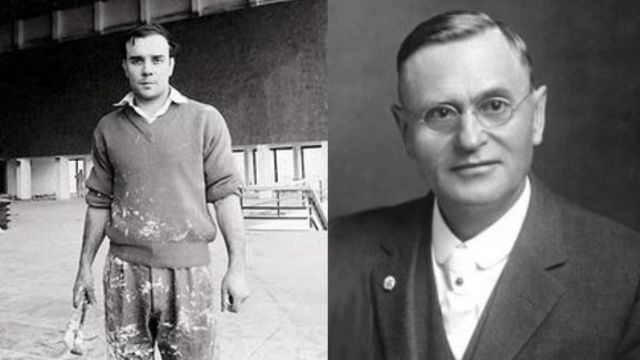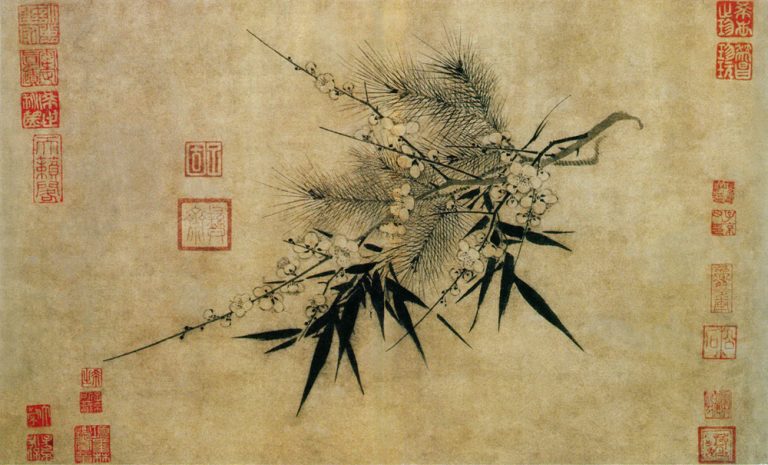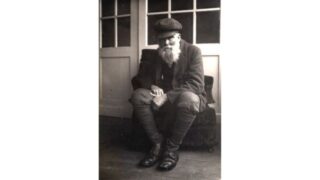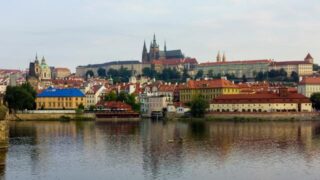A new exhibition in New York offers the opportunity to reflect on the artist’s relationship with esotericism and religion.
by Massimo Introvigne


This week offered summer-like days in New York, which are possible but not common there in April. New Yorkers were encouraged to walk around and visit art exhibitions, of which there is never a shortage in the city. A small but precious one has just been inaugurated on April 11 at the centrally situated Lévy Gorvy Dayan art gallery, under the title “Yves Klein and the Tangible World.”
The gallery’s choice has been to reduce captions to a minimum. Visitors are supposed to know about Klein. As for those who don’t, they can just let themselves be overwhelmed by the experience.
Being, after all, a sociologist, I always like to look at the visitors to exhibitions, who are not less interesting than the artworks themselves. I was aware that the exhibition had interested the media for its reproduction of Klein’s “Sculpture Tactile,” where a female nude model is placed inside a box and visitors cannot see her but can “feel” the girl by touching the box. This performance is promised twice a week, and dates did not coincide with my visit. However, I could appreciate how visitors gathered to watch a documentary on how some of the exhibited artworks were produced: Klein had nude models roll themselves into his trademark blue paint and then leave prints of their bodies on canvas. A serious art magazine expressed its concern that hostile reactions might follow, since these are “challenging works to show in the current climate, which is in some ways more sexually conservative. Young people are having less sex … and the Me Too movement has made people more conscious of sexual exploitation.”


Tell you the truth, I did not notice any strong reaction from the audience, negative or otherwise. Perhaps the concerns would have materialized had the visitors been told of the connections Klein had established during this life between nudity, esotericism, and religion, a combination that had sent to jail more than one leader of new religious movements preaching sacred eroticism. But then they were not told.
As the late art historian Thomas McEvilley explained in 1983 (“Yves Klein et les rose-croix,” in “Yves Klein,” Paris: Centre Pompidou, 1983, 233–44), the “necessary foundation” to understand the work of Klein is his relationship with the Rosicrucian Fellowship, an esoteric order founded in 1909, ten years before he died, by Danish-American astrologer Carl Louis von Grasshoff, who went under the pseudonym of Max Heindel. The Fellowship still exists and is headquartered in Oceanside, California. The relationship, as McEvilley noted, eluded, or was misunderstood by, some scholars of Klein, who confused Max Heindel’s Rosicrucian Fellowship with AMORC, the Ancient and Mystical Order Rosae Crucis, also headquartered in California, but in San Jose rather than Oceanside, or with the European organizations of French novelist Joséphin Péladan, who gathered symbolist artists in his Salons de la Rose-Croix. Both AMORC and Péladan’s enterprises are also important for the history of art, but Heindel’s ideas were different. Their roots were in Theosophy and modern astrology more than in any pre-existing Rosicrucian organizations.
Klein read Heindel’s key work, “The Rosicrucian Cosmo-Conception” (1909) at the end of 1947 or in the first months of 1948, when he was 19. He shared his enthusiasm for the book with his friends Claude Pascal and Armand Fernandez (who later became famous as an artist under the name of Arman), who also practiced judo with him. They managed to meet an old chemical engineer and astrologer, Louis Cadeaux, who represented Heindel’s organization in France. They formed a study group of Heindel’s work under Cadeaux, and in June 1948 Klein and Pascal (but not Arman) were formally initiated as members of the Rosicrucian Fellowship.


Klein sent regular reports on the progress of his study of Heindel to the Fellowship in Oceanside for several years. He did not renew his membership after 1953 but, as McEvilley wrote, at least until 1958 Heindel “Cosmo-Conception” “was the essential text for Klein’s life” and he continued to practice meditation with the techniques taught by the Fellowship until he died in 1962.
More importantly, Klein acknowledged that Heindel’s occult philosophy was the source of his artistic enterprise. Influenced by Blavatsky’s Theosophy, Heindel taught that the original perfection was empty and formless, and that the advent of forms corresponded to the progressive densification and decadence of the universe. Heindel also announced a future glorious return from the realm of forms to the realm of pure spirit. It is possible, McEvilley suggested, that Klein came to believe that he was himself the prophetic figure tasked with the mission of facilitating this return.
For Klein, the return was to be accomplished through provocative artworks and performances. They included formless paintings in the shape of monochromes (most of them in the signature International Klein Blue color that the artist tried to copyright); the formless music of the “Monotone Symphony” (of which Lévy Gorvy Dayan will offer a performance in New York’s St James’s Church on May 1): the “sale” of empty spaces of the city of Paris, the “Zones of Immaterial Pictorial Sensibility” to buyers who would pay in gold, half of which Klein would throw into the Seine river; empty rooms exhibited as works of art; and even the “Anthropométries,” the paintings obtained from prints of the bodies of naked models covered in blue paint, where an erotic form was first affirmed and then destroyed. Arman represented similar principles by burning and destroying various objects.
All this, McEvilley insisted, was “a conscious and deliberate artistic adaptation of Heindel’s ideas” that only an “unwise” historian of Klein would ignore.


McEvilley, however, did admit that other influences were at work in Klein’s life. One was Roman Catholicism, an interest he never abandoned while he continued to meditate in Heindel’s style. An extraordinary testimony of this part of Klein’s religious interests is the ex voto he left in 1961 at the Monastery of Saint Rita in Cascia, Italy. The devotion to the Augustinian nun, who died in 1457, was a tradition in Klein’s family and he attributed to the saint his artistic success. He made the pilgrimage to Cascia at least five times, and in 1958 left a small blue monochrome as ex voto. The ex voto of 1961 is, however, one of Klein’s masterpieces and was discovered accidentally in 1979, as the nuns had not realized they were in possession of an invaluable work by a leading artist. In fact, they were about to destroy it to use the gold for modern stained-glass windows when the artist in charge of realizing the latter, Armando Marrocco, realized it was in fact a work by Klein.


Klein’s ex voto of 1961 is transparent plastic box, divided into three compartments. The top compartment has three sections, filled with paint pigments respectively rose, blue, and gold. In the middle section is a prayer to Saint Rita handwritten by Klein. The bottom compartment houses, on a blue pigment bed, three bars of gold, the part not thrown into the Seine resulting from the “sale” of the famous “Zones of Immaterial Pictorial Sensibility.” The extraordinary ex voto was last exposed at the MART Museum in Rovereto in 2019–2020.
Klein’s project was an experience and a proclamation of absolute freedom from the limitations of matter and forms. It was no orthodox Catholicism and had more than a hint of Asian spirituality, filtered through Theosophy and Heindel’s ideas. Yet, there was more than provocation in his art, naked models covered in International Klein Blue paint included. But one should now mention these things sotto voce, as today combining religion, esotericism, and eroticism may prove more dangerous than artistic provocation.









